100 Stories
The Soul of Hiroshima City
An 8 minute (good omen: The Buddha’s number) Kabe Line train ride from Hiroshima station, deposits you at the quaint, old-school Mitaki station. A further 12 minute uphill push brings you to Mitaki Temple, founded in Daido 3, or 809 AD.
Of course, you have to negotiate your way past the Guard Cat first…
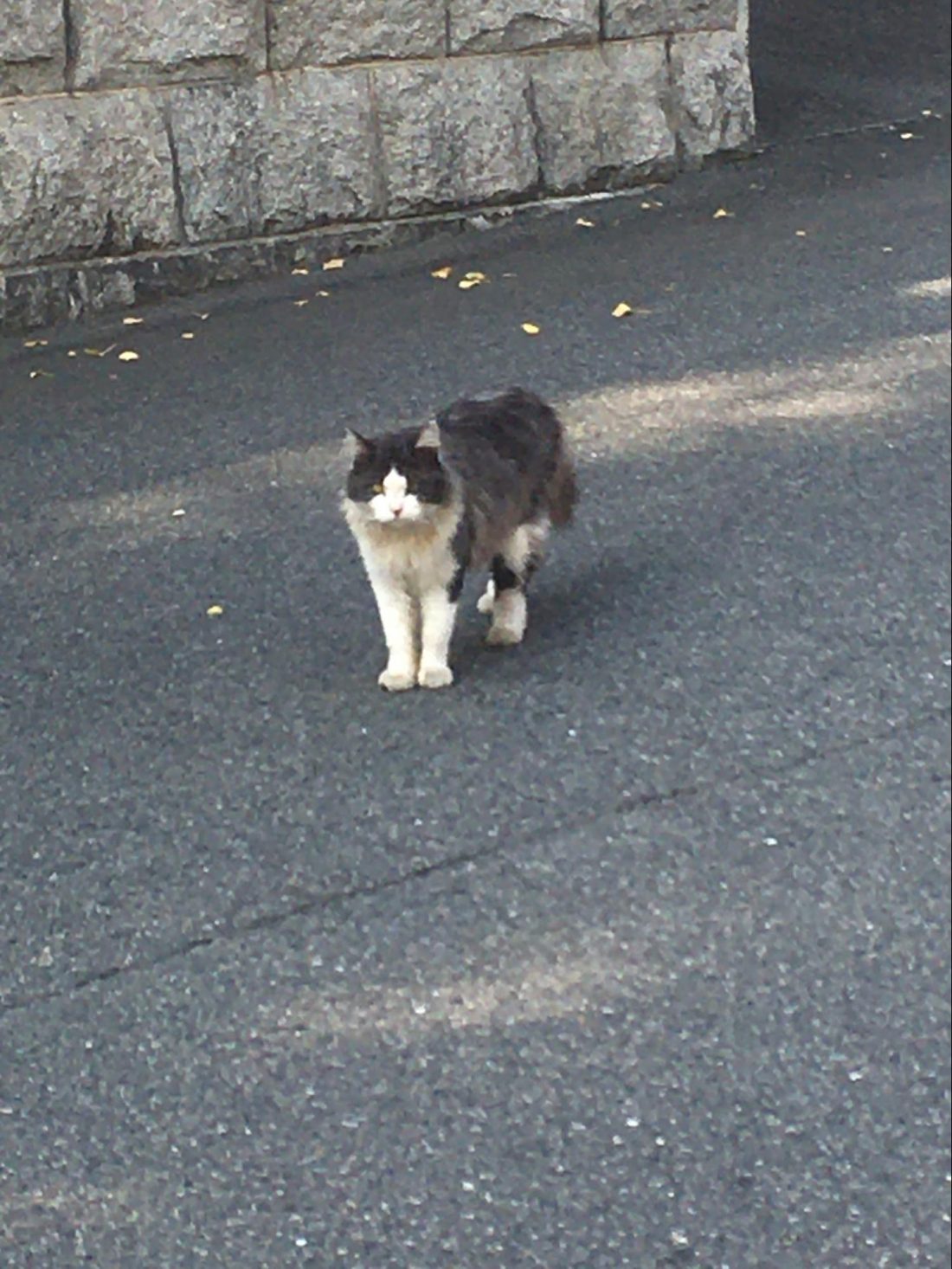
Colour
I visited Mitaki-Dera on a typical Japanese late-autumn morning, sunny, bright and warm enough to sweat to, even though the nights are cold. The first thing you notice on arrival is the shock of colour. It actually made my eyes ache, seeing such intensity and range all at once.It took a while for my vision to adapt, and the effect was to draw me starkly and immediately into The Now. Very Buddhist.
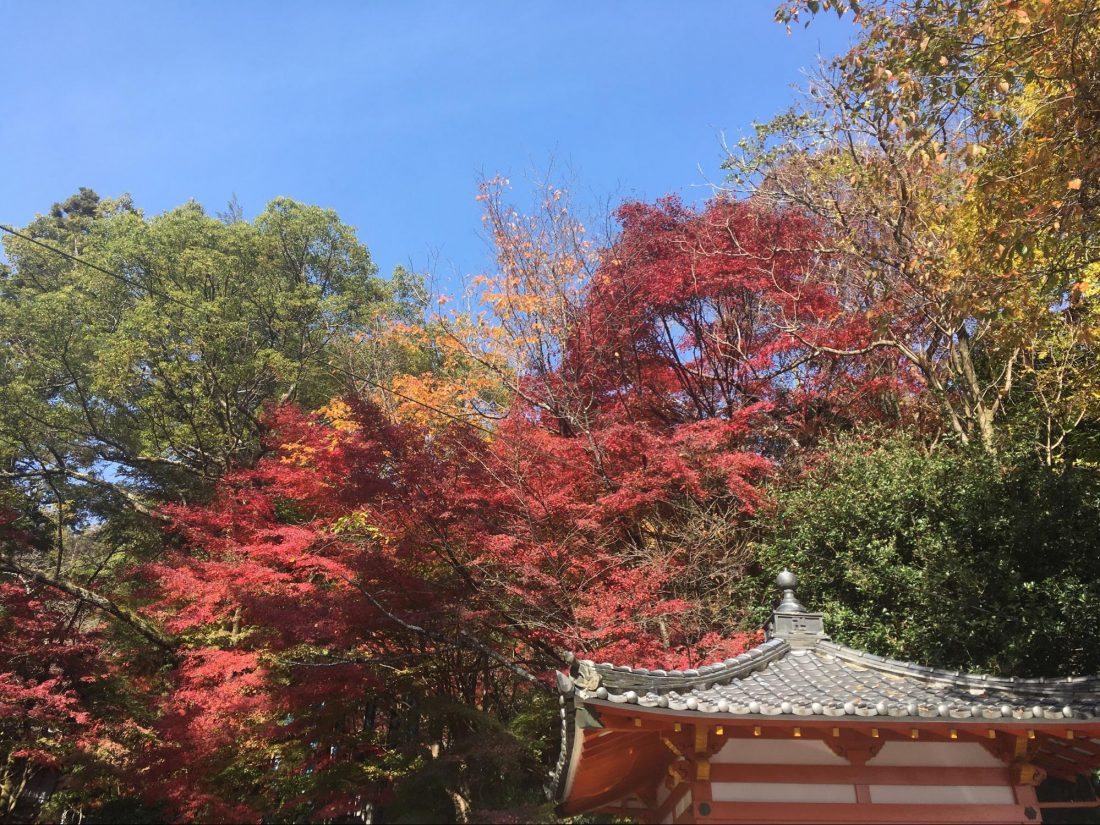
Contrast that with the previous photo of standard Japanese grey. Amazing! Sharp blue skies, evergreens and the reds, pinks, yellows and golds of the deciduous trees.
Cone cells in human eyes are usually of three types, sensitive to different bandwidths of the electromagnetic spectrum, namely short, medium and long (or blue, green and red). All the colours most people see are caused by the variation in stimulation of these 3 cells. But there are some people who have retained the genetic anomaly of tetrachromacy, or possession of 4 types of cone. This is what it felt like entering Mitaki, suddenly being bestowed with the gift of more complex, richer sight.
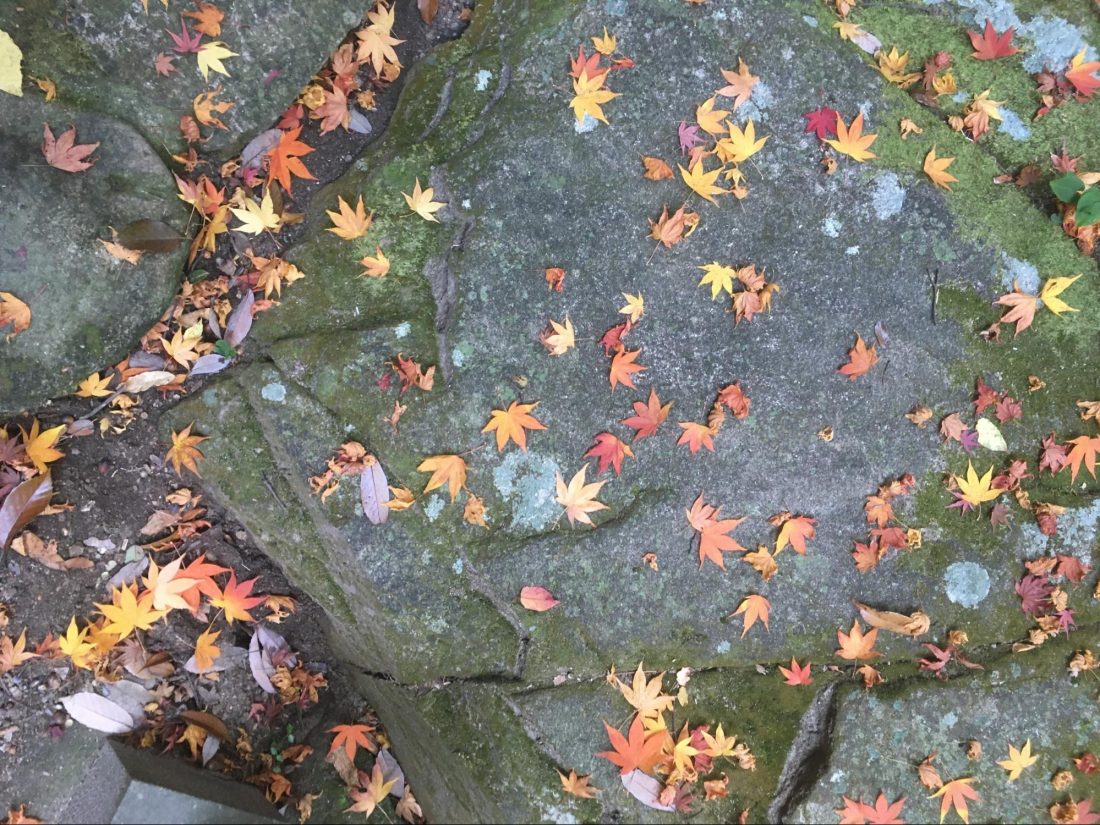
Water
Mitaki derives its name from 3 (mi) waterfalls (taki).The sound of water, falling, trickling, pooling, is everywhere, but it’s subtle rather than insistent. You can easily fade it out, but at other times it gradually seeps into your conscious awareness. Another neat idea of the Buddhists who selected this site for their temple: the water draws you into an appreciation of how the world is as it is, at this moment in time.
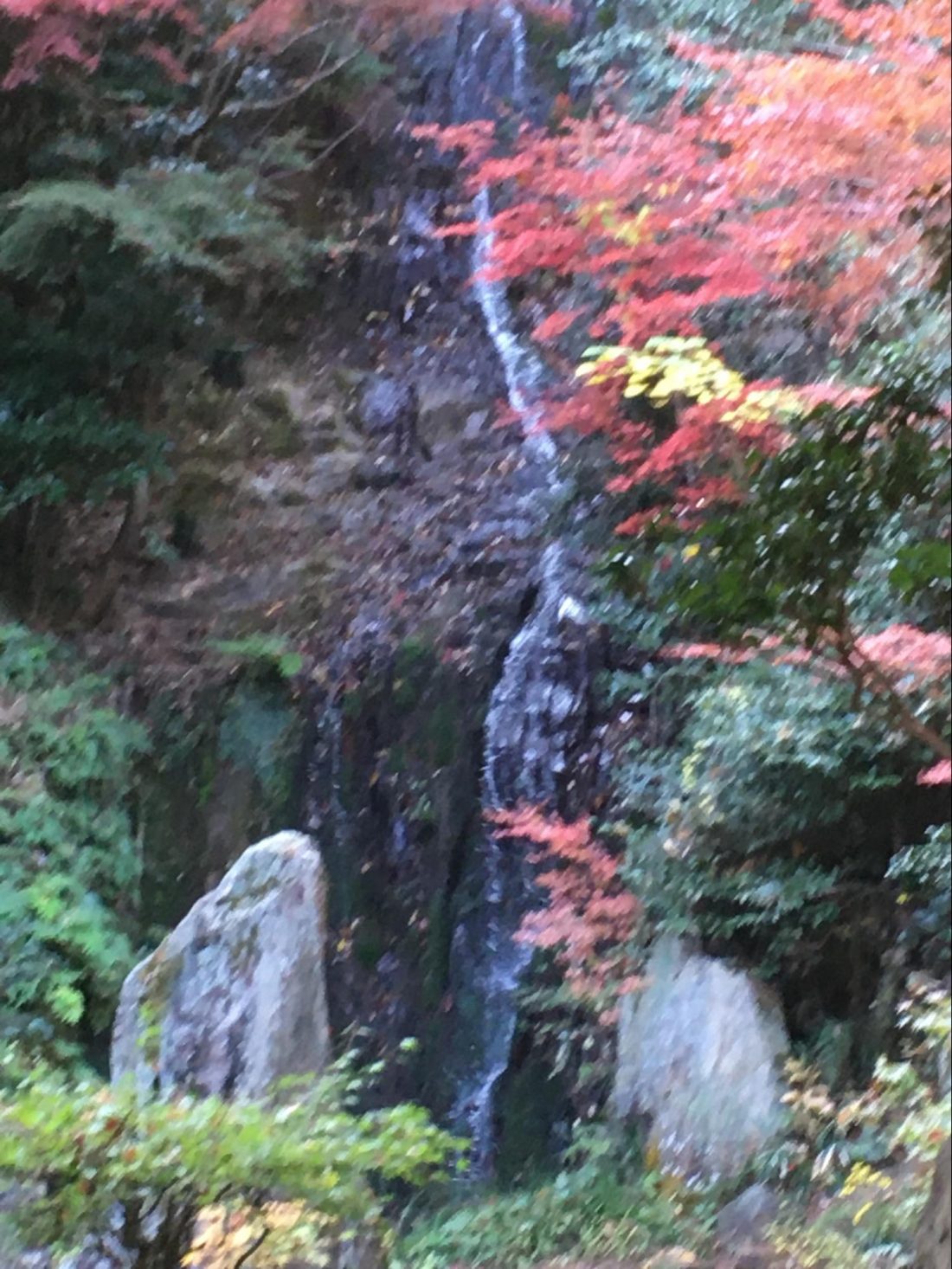
Don’t worry though, there is no need to get your feet wet. There are rough, stone bridges.

Statues
There are statues everywhere you look in the temple grounds. Naturally there are many of the traditional types you would expect to see in a Japanese temple, such as shishi lion/dog forms, and children wearing red hats and bibs.
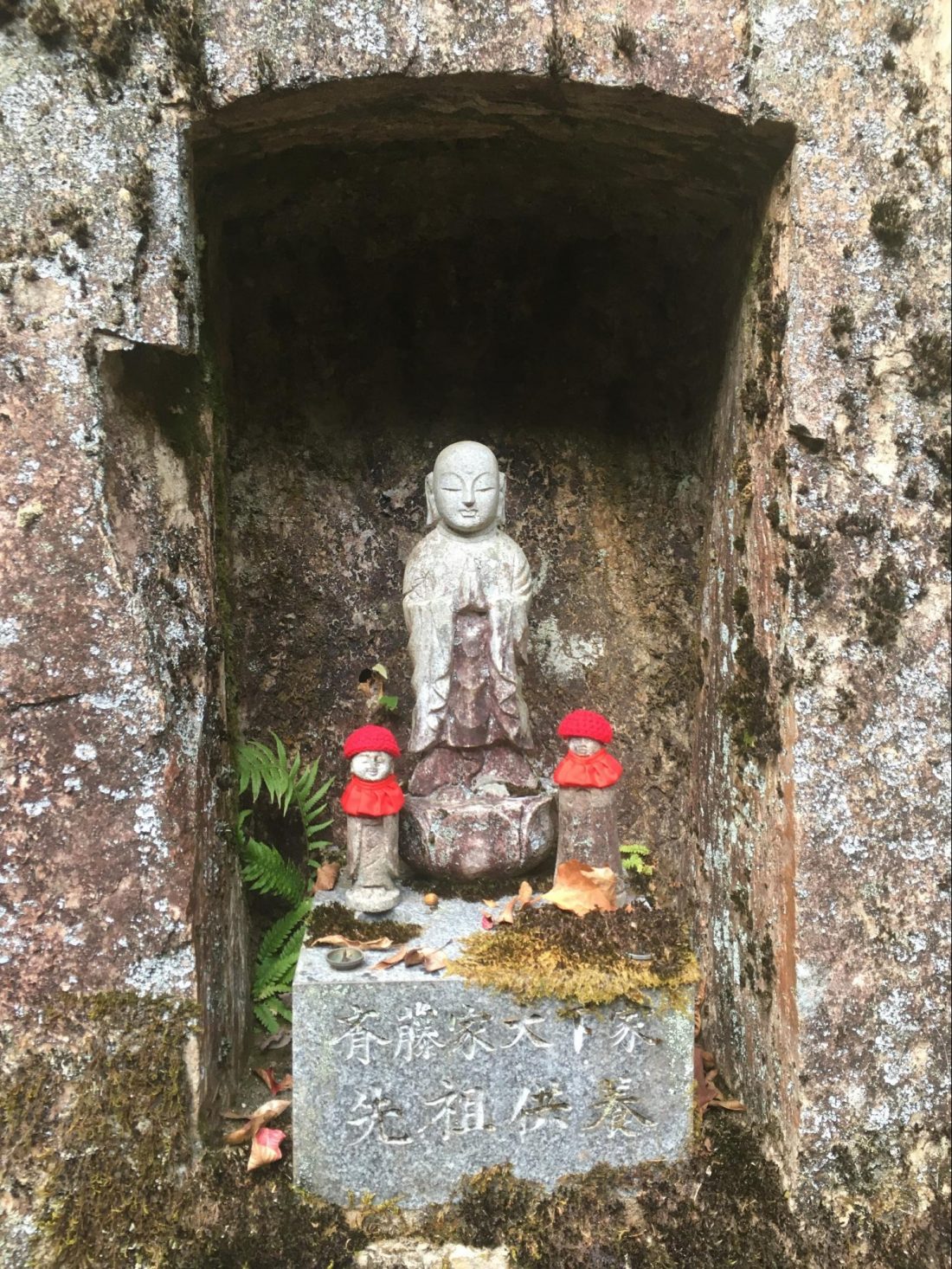
And this fearsome guardian.
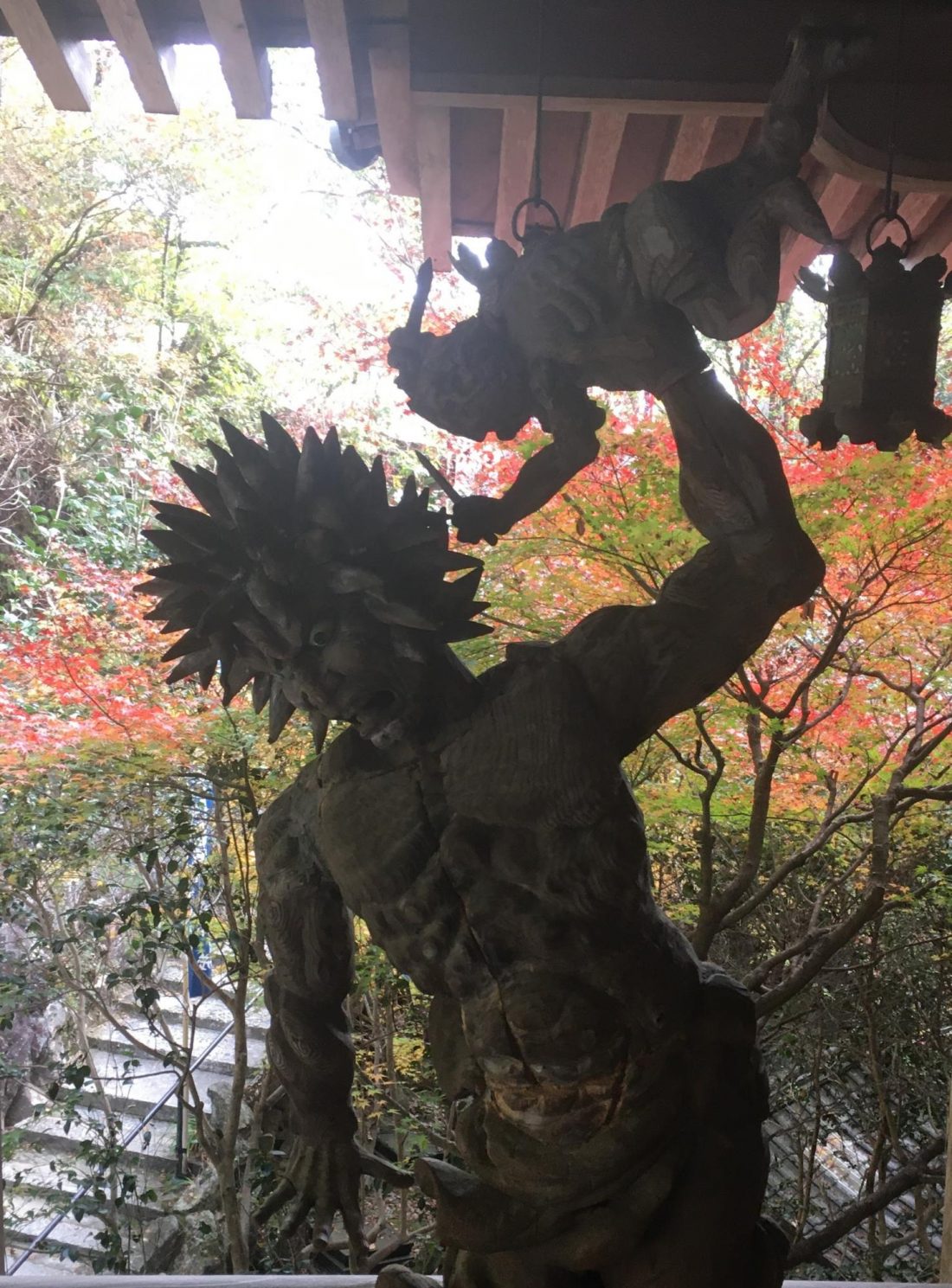
There are plenty of less-traditional forms too, for example, multi-armed Buddhas that are reminiscent of Khymer statues from their syncretic Hindu-Buddhist tradition, couples, even a Garuda from Indonesia or Thailand. There are also many statues that don’t depict The Buddhist theme at all, but are depictions of either revered monks or laypeople. Some defy any categorization, and are just plain cute.
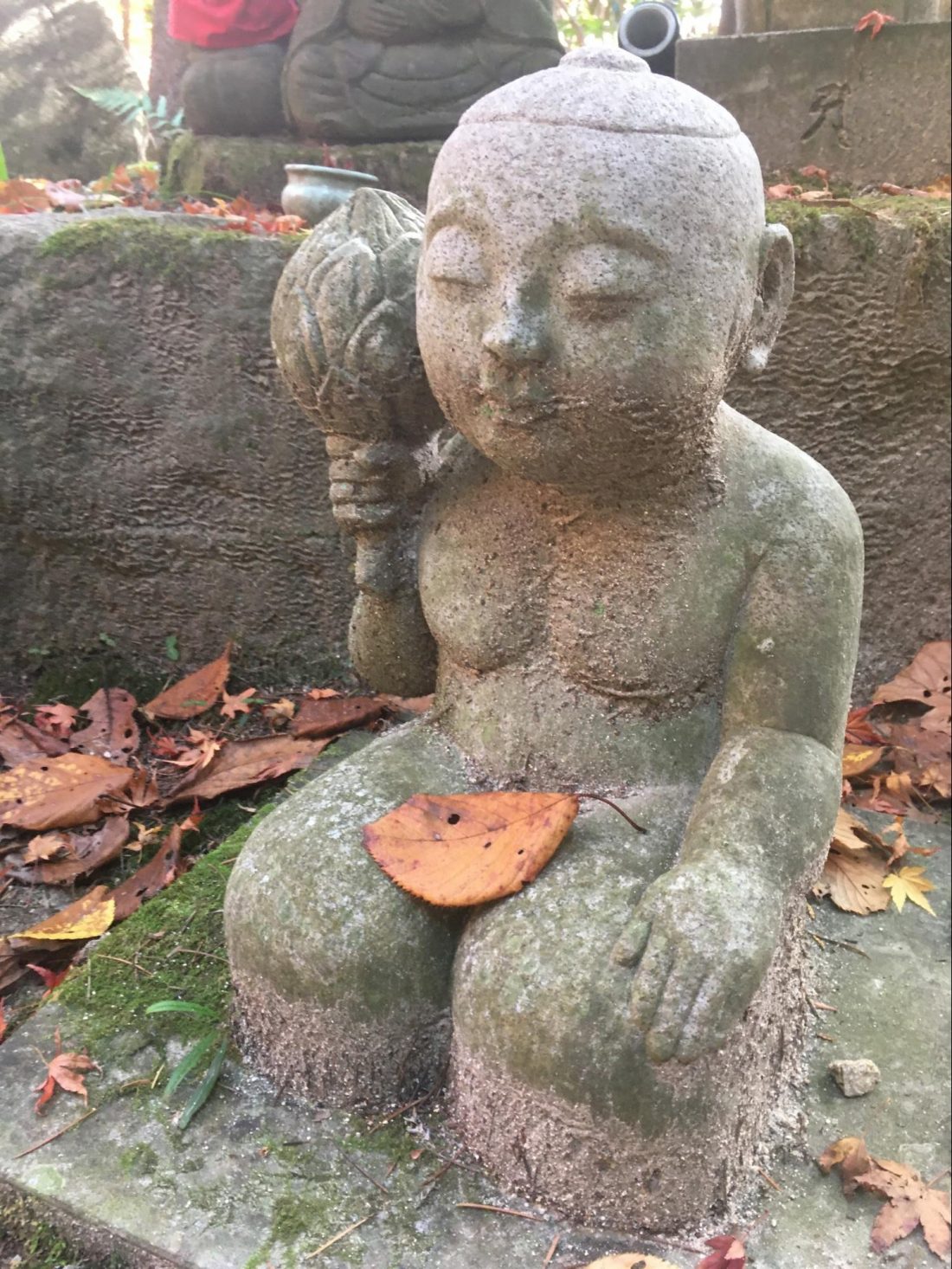
Forest
After a good hour of meandering through the temple grounds, enjoying the surprises it holds around every corner, I set off uphill for a trek in the forested mountain. There are a couple of paths, and the one I found myself on was signposted Course A, although it didn’t seem to correspond with the maps I’d seen in the temple. Regardless, I strolled past a large picnicking group surrounding a campfire and was almost immediately in the wilds.
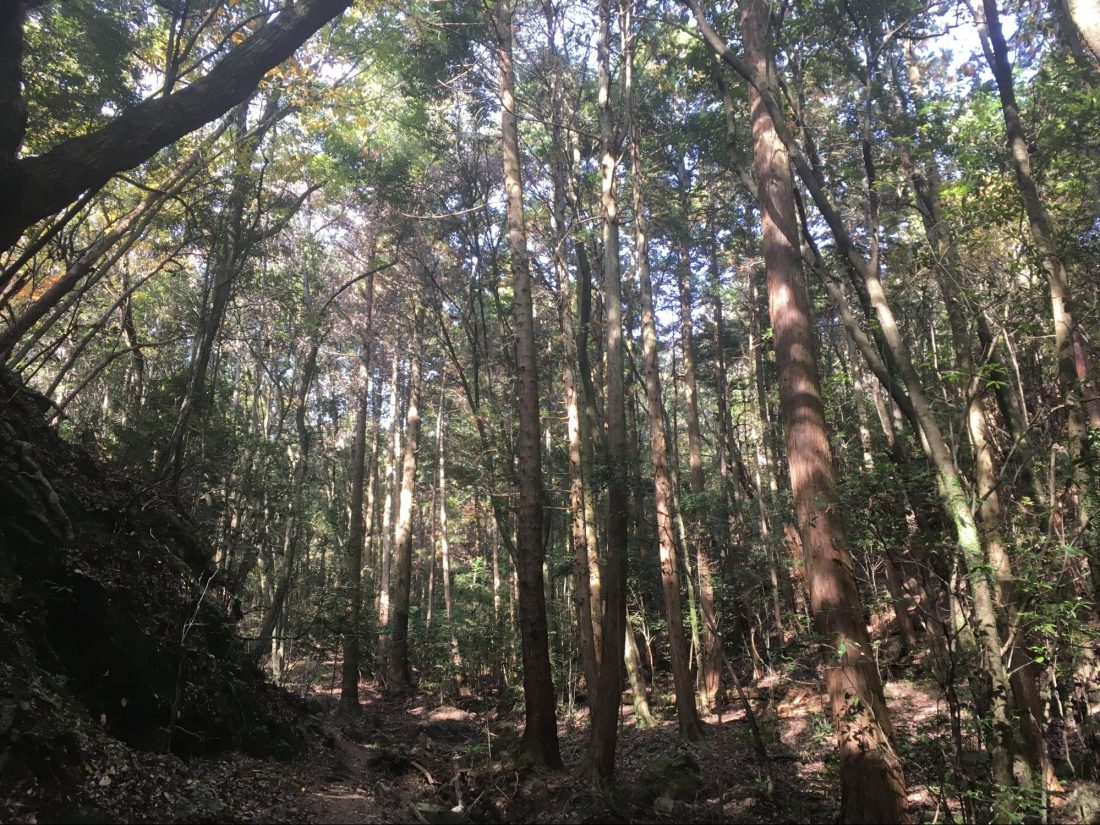
It was fairly tough going for this unfit 50-something, so should be quite easy for most folks, and would be a great place to unleash the kids. I watched the interplay of light in the trees, and listened to random falling leaves and the whooshing of hiyodori (brown-eared bulbuls). I met one individual and one couple coming the other way, and of course we exchanged greetings as is customary.
Moment of Joy
After 30 minutes or so of ascent, I realised there was nobody on the trail apart from the 3 I had earlier encountered. I was in an area of bamboo and the forest had fallen into silence, with not even the eerie creaking of this wood that the slightest breeze generates. I was completely alone and at peace.
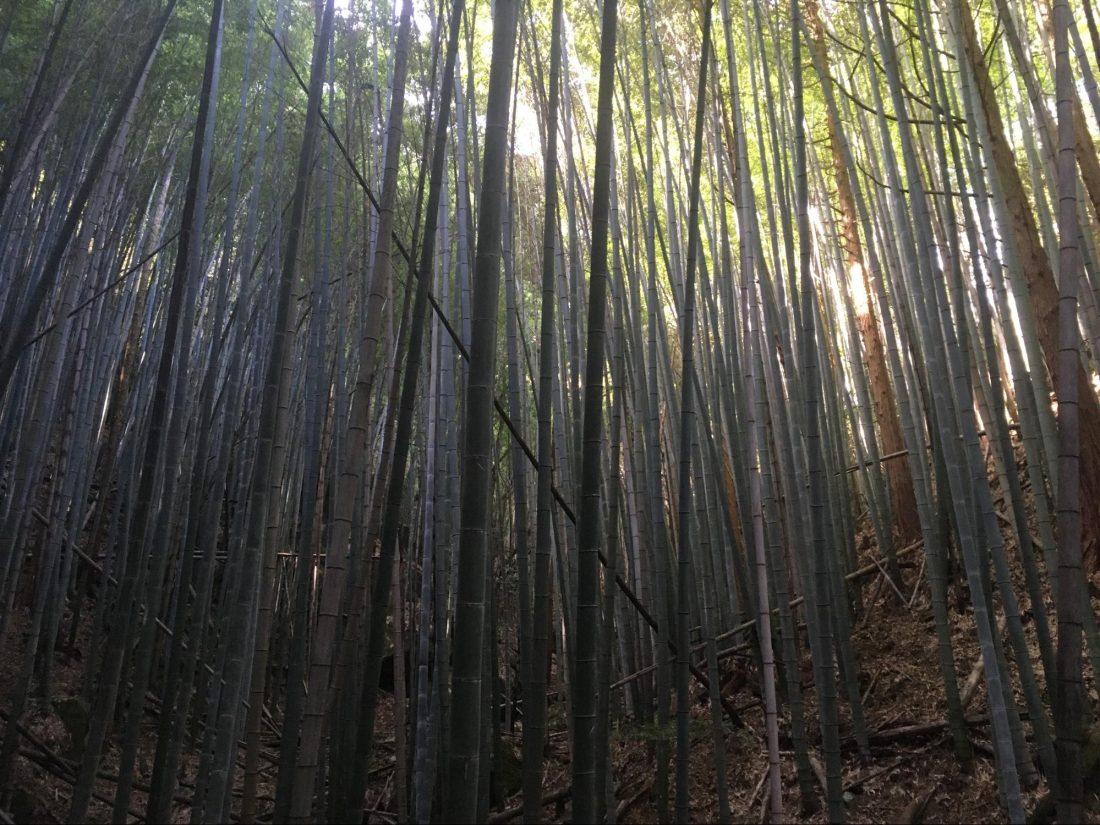
The historical Buddha, Gautama, (also known as the 4th Buddha in Myanmar) rediscovered the meditation technique of Vipassana, (“to see the world as it truly is”). I practise this technique, and had been planning to do so in the temple later, but this opportunity was too good to miss. The mountain was empty of humanity apart from me, so there was little risk of inadvertently freaking people out by their stumbling across the meditating white guy!
After sitting for a time, I retraced my steps back to the temple complex.
Structure
Unlike many temples, Mitaki is not based around some awe-inspiring or imposing building. The natural environment itself is the temple, and the structures that exist are there to play a supporting role. There is a place for holding ceremonies and praying, and pagodas for enshrining relics.
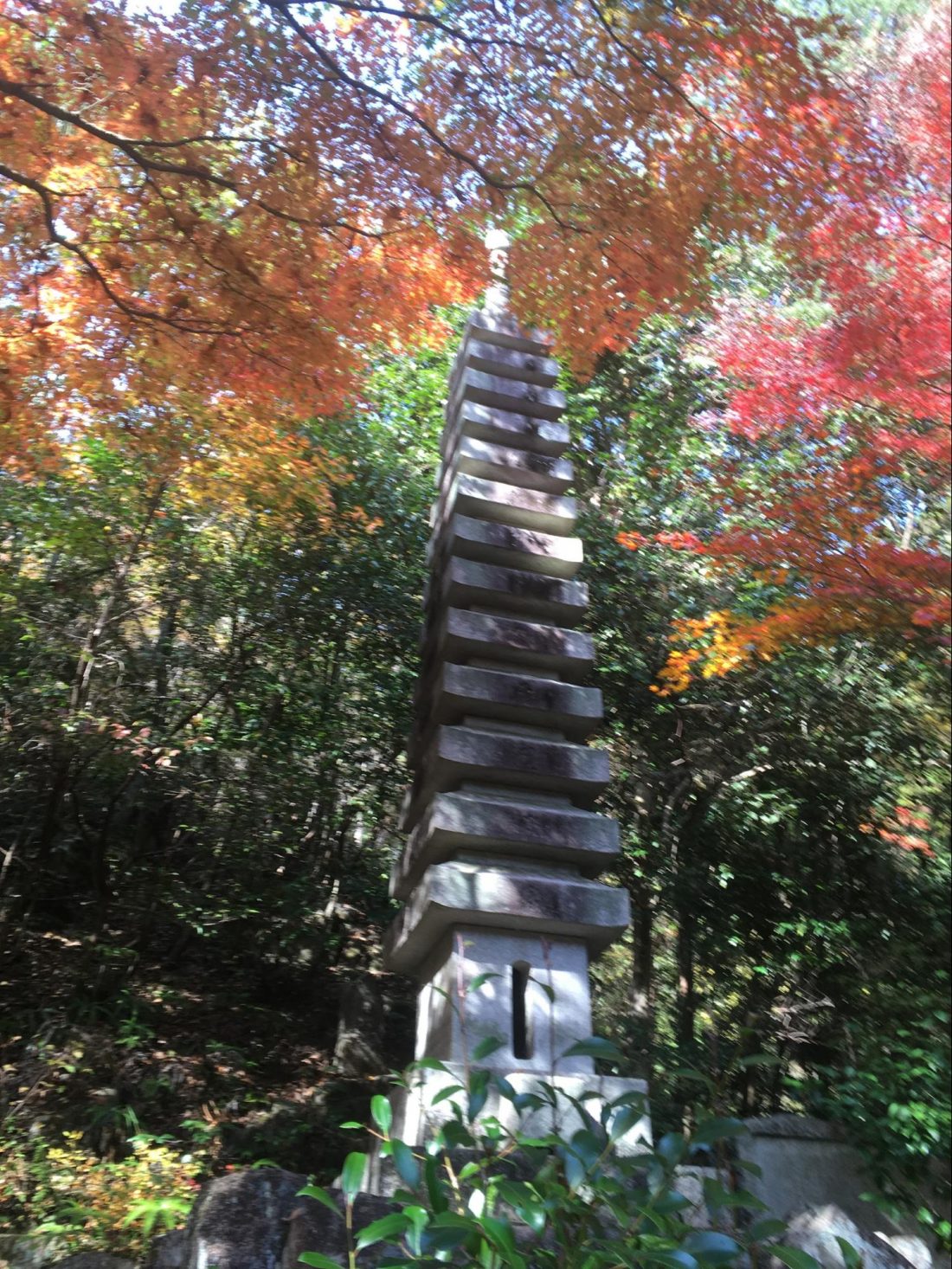
There is a well-appointed restaurant with a friendly and welcoming environment. A variety of udon are the mainstay dishes, and there are also snacks and drinks.
In keeping with the accommodating nature of spiritual belief in Japan, there is a Shinto shrine with a small bell on the end of a rope, necessary for calling the gods’ attention. There is also a much larger bell under a wooden roof, mainly used at New Year’s to clear away the cobwebs of the past: it is rung by the priests or monks 108 times to exile the same number of sins, and then by everyone else who just gets a kick out of ringing a huge bell!
Finally, there is a tahoto (many jewelled) pagoda that was moved here from Wakayama, to help console the murder victims of August 1945.
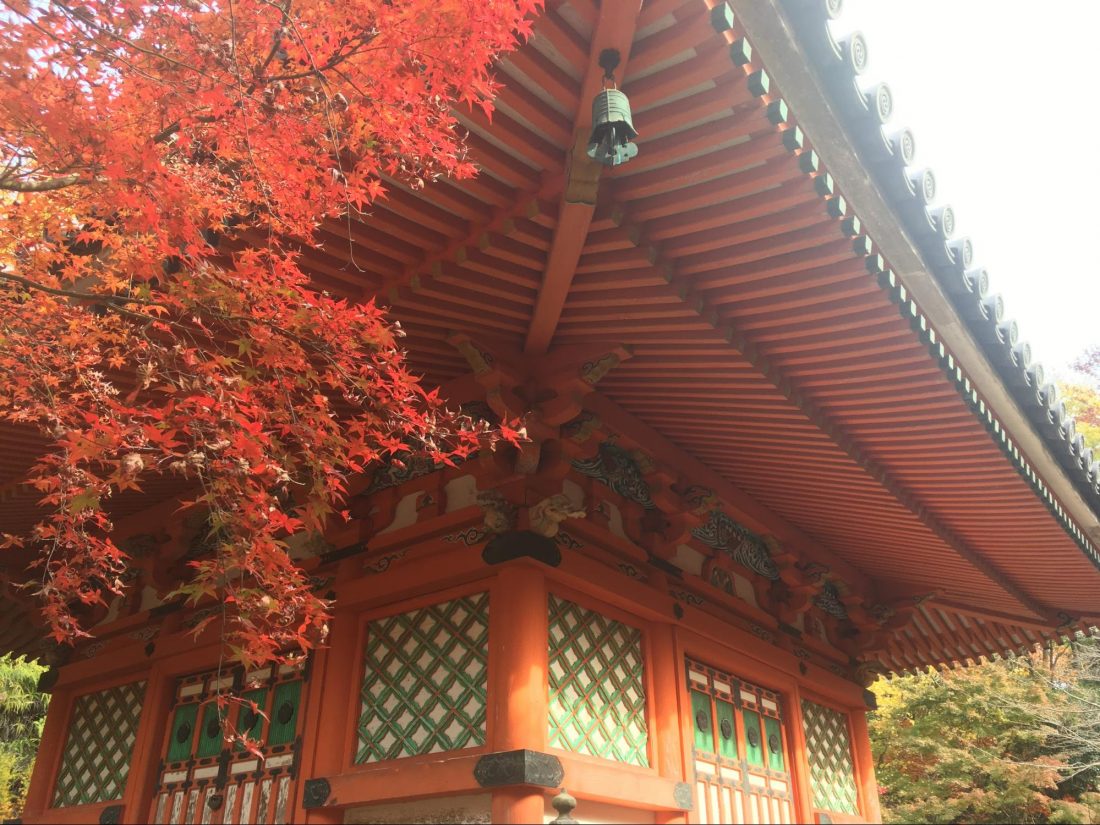
Mitaki temple had a wonderful effect on my inner self, really calming me and raising my spirits. It appears to have a similar effect on all visitors. I didn’t have extended conversations with anyone, but everyone I came across was smiling and treating each other gently. I didn’t hear any harsh words, but I heard a lot of laughter amongst friends. I didn’t sense any irritation or negativity, only peace and positivity.
I’ve lived in Asia for a quarter of a century and have enjoyed a lot of temple trips. But Mitaki is a real gem and highly recommended. For 1200 years, it has been sustaining guests in delicate feedback loops amongst air, water, wood, earth and beings. And being located just 20 minutes from the centre of Hiroshima, makes travelling here possible to be a regular event.
If you can get past the Cat.




